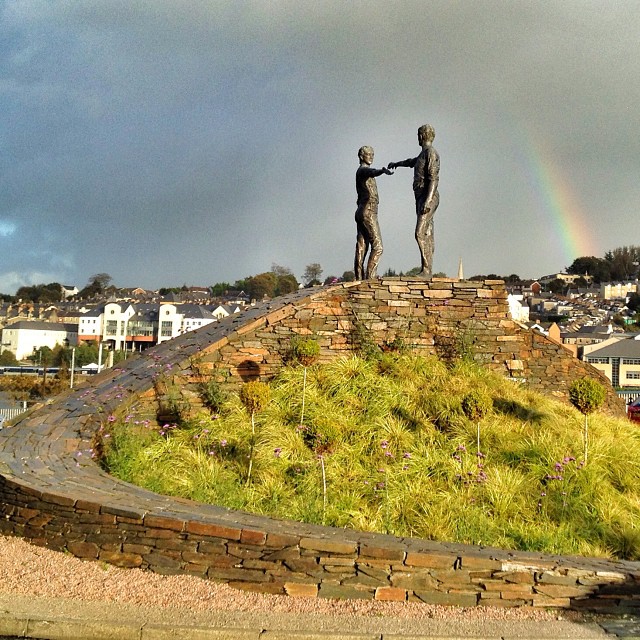Northern Ireland is well known as a place divided, with deeply rooted religious and political divisions and a long history of civil unrest perforating our community relations.
I am only nineteen years old. I can never claim to fully understand the impact of three decades of fighting because I didn’t live through it. I am lucky to have grown up in a time of relative peace. However, this word relative is key. Despite the fact that we are living in a “post-conflict” period, it is clear that the wounds have not fully healed and that resentments are still extremely prevalent today. Violence in our communities has not been consigned to the history books, as illustrated by recent rioting and destruction on our streets – an ominous reminder of the fragility of peace, even in 2021. Peace is something we achieved in theory following the signing of the Good Friday Agreement in 1998, but we have not fully put it into practice.
It is this message that the “Hands Across the Divide” statue aims to embody. It is located at Craigavon Bridge as you enter Derry/Londonderry. It was created by local sculptor Maurice Harron and was unveiled in 1992, twenty years after the tragic events of Bloody Sunday. The statue depicts two bronzed figures towering above the city. Their hands reach towards each other in expectation but they do not quite touch. It is this gap which most profoundly represents the decades of hurt and anger caused on both “sides”.

On his visit to Northern Ireland in 1995, three years after the statue was erected, Bill Clinton said that the statue “is a beautiful and powerful symbol of where many people stand today… Let it now point people to the handshake of reconciliation. Life cannot be lived with the stillness of statues.”
The monument is both a goal and a process. It serves as a physical reminder of the divisions that have tarnished Northern Ireland’s past, but the close proximity of the two hands to one another shows that the two sides can be reconciled; true peace is possible. However, to bridge this gap movement is necessary. As Clinton stated, “life cannot be lived with the stillness of statues.”
Although the two sides of the statue cannot physically be brought together, theoretically the two sides they represent can. Bridging a gap is possible. Change like this will not happen overnight, and it can never atone for the pain and suffering caused, but the statue serves as a reminder of the hope that peace can be achieved, one day.
Unfortunately, it seems that in reality, almost thirty years after it was unveiled, we have still not achieved genuine reconciliation. I wonder whether we should even have a statue to remember this tragic past – thousands dead and many more impermeably physically and psychologically scarred by the events that unfolded. Is a statue an appropriate “vehicle of memory” or is it keeping divisions strong? The fact that two perspectives are depicted may lead us to assume that there will always be two sides. Is this what is preventing us “bridging the gap”?
More on Northern Slant:
- Northern Ireland: What’s the problem? by Lisa Whitten
- John Hume: He showed us how to reach out by John Stevenson
